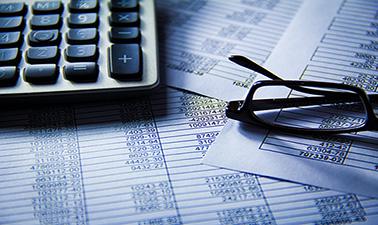In this lesson, we are going to learn how basic transactions move through the accounting equation. What we need to remember is that because the accounting equation always balances,every movement in the equation must be countered by another movement of the same amount.
Now, here’s what the bakery’s accounts look like right now:
| ASSETS | LIABILITIES |
| Bank $20,000 | Loan $9,000 |
| Computer $1,500 | |
| Oven $2,000 | OWNERS EQUITY $15,000 |
| iPhone $500 | |
| Balance $24,000 | Balance $24,000 |
As you can see, on the left side we have assets of a $20,000 in the bank, a computer which cost $1,500, our favourite Bakemaster X Series oven worth $2,000, and an iPhone we scored off eBay for $500. On the right side we have a single liability which is a loan from Anne at the bank for $9,000. The balance is made up of Owners Equity of $15,000.
Notice how both the debit side and the credit side are in balance with each other, as they both add up to $24,000.
That’s a good start.
Now it’s time for business. Below are some everyday transactions in the life of your bakery. Let’s start selling cakes!
Transaction 1: You buy some cake mix for your store for $3,000
Purchasing our famous cake mix is like purchasing inventory. For now, we are going to classify inventory purchases as an expense. Hence, our expenses are going to increase. Remember, this will result in an increase in the debit side.
So now that expenses (CAKE MIX) has increased on the debit side, another movement is needed to keep the equation in balance. The other side of our transaction will need to be either:
- An increase on the credit side
- A decrease on the debit side
In this case, because we are spending cash to buy the cake mix, the movement is obviously a decrease in our bank account of $3,000.
Hence the transaction will look like:
| DEBIT SIDE | CREDIT SIDE | ||
| Account | Amount | Account | Amount |
| Bank (asset) | -$3,000 | ||
| Cake mix (expense) | +$3,000 | ||
| Movement | $0 | Movement | $0 |
Notice how our debit side increased by $3,000 due to an increase in the Cake Mix Expenses. Then, our debit side decreased by $3,000 because our bank account, an asset, decreased when we paid for the cake mix. The result is that both entries cancel each other out and our equation stays in balance. Perfect!
Transaction 2: Anne the loan officer calls. She asks for interest of $1,000 to be paid on the loan.
OK, so we’re dealing with an expense, which is interest. We know that expenses sit on the debit side. That means we’ll record interest expenses of $1,000.
To pay the interest, we took money out of the bank account, so the other side of the equation will be a decrease in our bank account of $1,000. Let’s see how it balances.
| DEBIT SIDE | CREDIT SIDE | ||
| Account | Amount | Account | Amount |
| Bank | -$1,000 | ||
| Interest expense | +$1,000 | ||
| Movement | $0 | Movement | $0 |
Perfect!
Now it’s your turn. Have a go at dragging the correct accounts and their amounts onto the correct side.
Transaction 3:
You sell a box of cakes for $5,000.
Hint – SALES is revenue. Revenue sits on the credit side. When you make sales, you receive money in the BANK.
- -5000
- 5000
- -5000
- 5000
- BANK
- SALES
- OWNER’S EQUITY
- LOAN
| DEBIT SIDEAccount Amount | CREDIT SIDEAccount Amount |
Transaction 4:
You pay your telephone bill of $300
Hint – TELEPHONE bill is an expense. Expenses sit on the debit side. Paying your telephone bill will require money to be taken from the BANK.
- -300
- 300
- 300
- -300
- BANK
- LOAN
- OWNER’S EQUITY
- TELEPHONE EXPENSE
| DEBIT SIDEACCOUNT AMOUNT | CREDIT SIDEACCOUNT AMOUNT |
Transaction 5:
You sell another box of cakes for $2,000
- -2000
- 2000
- -2000
- 2000
- BANK
- SALES
- OWNER’S EQUITY
- LOAN
| DEBIT SIDEAccount Amount | CREDIT SIDEAccount Amount |
Transaction 6:
You’ve been playing with your bakery’s Facebook page for too long and the computer overheats. You pay a repairman $50 to fix it.
Hint – REPAIRS is an expense. Expenses sit on the debit side. Paying expenses requires money to be taken from the BANK.
- -50
- 50
- 50
- -50
- BANK
- LOAN
- OWNER’S EQUITY
- REPAIRS
| DEBIT SIDEACCOUNT AMOUNT | CREDIT SIDEACCOUNT AMOUNT |
Transaction 7:
It’s time to go on holiday. Hawaii maybe? You withdraw $1,000 from the bakery’s bank account to purchase your ticket.
Hint – When an owner withdraws money for personal reasons, this is considered DRAWINGS. Drawings sits on the debit side.
- -1000
- 1000
- 1000
- -1000
- BANK
- LOAN
- OWNER’S EQUITY
- Drawings
| DEBIT SIDEACCOUNT AMOUNT | CREDIT SIDEACCOUNT AMOUNT |
Transaction 8:
You visit Johns Car Shop to buy a delivery car. You choose the pink beetle with yellow polka dots and a big flower in the middle. It costs $3,000. You purchase the car on credit, meaning you will pay for it in full next month.
Hint – CAR is an asset. Assets sit on the debit side. When you purchase something on credit, it is similar to debt. You owe money, which is a liability. Liabilities sit on the credit side.
- -3000
- 3000
- -3000
- 3000
- CAR
- JOHNS CAR SHOP
- OWNER’S EQUITY
- BANK
| DEBIT SIDEAccount Amount | CREDIT SIDEAccount Amount |
We’ve just had 8 new transactions run through our business. Let’s have a look at what our accounts look like now:
The below table is simply an expanded version of our accounting equation. Notice how on the left side we still have assets, expenses and drawings. On the right side we have revenue, liabilities and owner’s equity.
| Debit side | Credit Side | ||
| Bank | $21,650 | Sales | $7,000 |
| Computer | $1,500 | ||
| Car | $3,000 | ||
| iPhone | $500 | ||
| Oven | $2,000 | Loan | $9,000 |
| Johns Car Shop | $3,000 | ||
| Cake mix expense | $3,000 | ||
| Interest expense | $1,000 | Owner’s Equity | $15,000 |
| Telephone expense | $300 | ||
| Repairs | $50 | ||
| Drawings | $1,000 | ||
| Balance | $34,000 | Balance | $34,000 |
It can also be helpful to classify our “accounts” into their respective categories. For example, “bank” is an asset, hence we can display it in the Assets category. Sales are a form of revenue, and hence we can place it in the Revenue category.
This allows us to split our debit side up into assets, expenses and drawings, while our credit side is split up into liabilities, revenue and owner’s equity. This is very helpful when trying to monitor changes in our accounting equation.
Let’s go ahead and break down our debit and credit side into categories. As long as each account is in the right place, everything should stay in balance:
| Debit side | Credit Side | ||
| ASSETS | REVENUE | ||
| Bank | $21,650 | Sales | $7,000 |
| Computer | $1,500 | ||
| Car | $3,000 | ||
| iPhone | $500 | LIABILITIES | |
| Oven | $2,000 | Loan | $9,000 |
| EXPENSES | Johns Car Shop | $3,000 | |
| Cake mix expense | $3,000 | ||
| Interest expense | $1,000 | OWNERS EQUITY | $15,000 |
| Telephone expense | $300 | ||
| Repairs | $50 | ||
| DRAWINGS | $1,000 | ||
| Balance | $34,000 | Balance | $34,000 |
Still in balance? Perfect!

